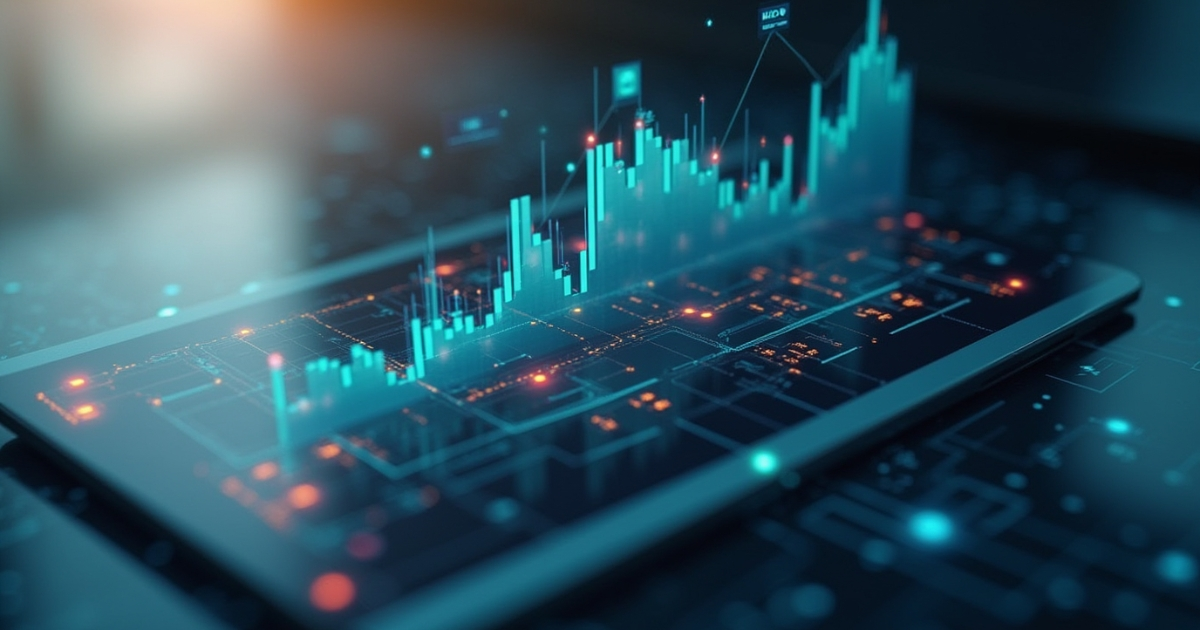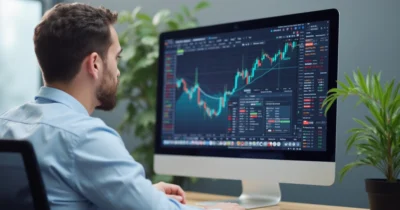Imagine stepping into a world where transactions worth millions of dollars are executed in mere seconds. A world where advanced tools provide insights that retail traders can only dream about. This is the realm of institutional Investment platforms—a game-changer for professional investors and financial institutions. Whether you’re just curious or looking to elevate your understanding of trading, this guide breaks it all down for you in simple terms.
Table of Contents
What Is an Institutional Trading Platform?

Definition and Overview
An institutional trading platform is an advanced software solution tailored for large-scale investors. These platforms are leagues ahead of standard retail trading tools, offering features that cater to the demands of hedge funds, investment banks, pension funds, and other financial giants. Unlike retail platforms, which prioritize user-friendliness for individual traders, institutional platforms focus on speed, precision, and powerful analytics.
Key Features of Institutional Trading Platforms
- Direct Market Access (DMA): Enables institutions to execute trades directly on the exchange, bypassing intermediaries for faster execution.
- High-Frequency Trading (HFT): Provides algorithms that process and execute trades at lightning speed, capturing minute market movements.
- Advanced Analytics: Equipped with data visualization tools, real-time market insights, and predictive modeling capabilities.
- Global Integration: Allows access to multiple international markets seamlessly from a single interface.
Examples: Bloomberg Terminal and Refinitiv Eikon are among the most prominent institutional platforms in use today.
How Institutional Trading Platforms Work
The Role of Technology
At the core of institutional trading platforms is cutting-edge technology. They rely heavily on:
- AI and Machine Learning: These tools analyze historical data and current trends to provide actionable insights.
- Low-Latency Connections: Ensures that trades are executed within milliseconds, which is critical in high-stakes trading.
- Customizable Interfaces: Users can tailor dashboards to focus on specific asset classes or trading strategies.
Who Uses Institutional Trading Platforms?
Institutional platforms are not for everyone. Their primary users include:
- Hedge Funds: These firms use platforms to manage large portfolios and execute high-volume trades efficiently.
- Proprietary Trading Firms: Focus on leveraging market opportunities using sophisticated algorithms.
- Investment Banks: Trade large volumes of stocks, bonds, and other assets for their clients or own accounts.
- Pension Funds and Insurance Companies: These institutions rely on advanced tools to manage long-term investments.
Differences Between Retail and Institutional Trading Platforms
Feature Comparison Table
| Feature | Retail Platforms | Institutional Platforms |
|---|---|---|
| Target Users | Individual traders | Professional institutions |
| Speed | Standard | Ultra-fast, low-latency |
| Tools & Analytics | Basic | Advanced, customizable |
| Cost | Low | High |
| Market Access | Limited | Global and unrestricted |
Key Takeaway
Retail platforms are ideal for individuals with smaller capital and less complex needs. On the other hand, institutional platforms are engineered to handle the complexities of large-scale trading with unmatched efficiency.
Pros and Cons of Using Institutional Trading Platforms
Advantages
- Access to Deeper Liquidity: Enables trading large volumes without significant market impact.
- Superior Tools and Analytics: Offers cutting-edge tools for predictive analysis and data visualization.
- Faster Execution Speeds: Critical for high-frequency and large-scale trading strategies.
- Exclusive Market Data: Provides access to in-depth, real-time data unavailable to retail traders.
Disadvantages
- High Costs: Subscription fees and operational expenses can be prohibitively expensive.
- Complexity: Requires a steep learning curve and specialized knowledge.
- Limited Accessibility: Often restricted to accredited investors or institutions with significant capital.
How to Access an Institutional Trading Platform
Steps for Beginners
- Identify Your Needs: Determine whether you require advanced analytics, global market access, or algorithmic trading capabilities.
- Research Platforms: Compare features, costs, and compatibility with your trading strategy.
- Meet Minimum Requirements: Most platforms have stringent entry barriers, such as high capital thresholds.
- Get Accredited: Partner with a financial institution or acquire the necessary licenses to gain access.
- Learn the System: Take advantage of training and support offered by the platform provider.
Key Benefits of Institutional Trading Platforms
- Enhanced Efficiency: Handle high trade volumes with ease.
- Tailored Solutions: Customize tools and dashboards to fit specific strategies.
- Global Market Access: Trade on worldwide exchanges using a single platform.
- Data-Driven Decisions: Leverage analytics to make informed trading decisions.
Things to Consider Before Choosing an Institutional Platform
- Budget: Assess whether you can afford the subscription fees and associated costs.
- Functionality: Ensure the platform aligns with your trading goals.
- User Support: Check for training programs, customer service, and technical support.
- Security: Confirm that the platform uses robust cybersecurity measures to protect your data.
FAQ
What is an institutional trading platform?
An institutional trading platform is a professional-grade system designed for high-volume and high-value trading. It offers advanced features like direct market access, algorithmic trading, and in-depth analytics, catering primarily to financial institutions and accredited investors.
Can retail traders use institutional trading platforms?
While most institutional platforms are designed for large-scale investors, some, like Interactive Brokers, offer features accessible to retail traders. However, these platforms often require substantial capital or accreditation.
Are institutional trading platforms worth the cost?
For financial institutions managing millions of dollars, the benefits of speed, precision, and advanced tools far outweigh the costs. However, individual traders may find the costs prohibitive unless their trading volume justifies the investment.
How do institutional platforms ensure fast execution?
They use low-latency connections and direct market access, enabling them to execute trades within milliseconds. This speed is crucial for strategies like high-frequency trading.
Stepping Into the World of Institutional Trading
Institutional trading platforms represent the pinnacle of trading technology, offering unparalleled tools and resources for those equipped to use them. While they may not be accessible to everyone, understanding their role in the financial ecosystem provides valuable insights into how global markets operate. If you’re serious about trading, learning about these platforms is a crucial step in elevating your financial acumen.
Ready to explore the world of institutional trading? Share your thoughts or questions in the comments below and take the first step toward mastering the financial markets!







